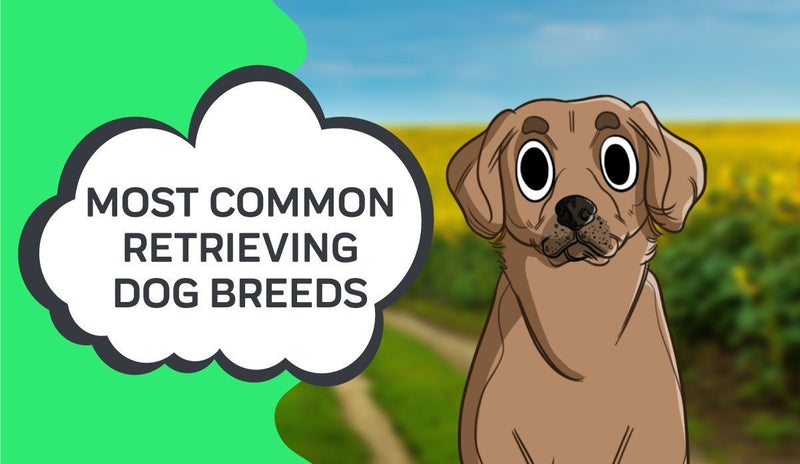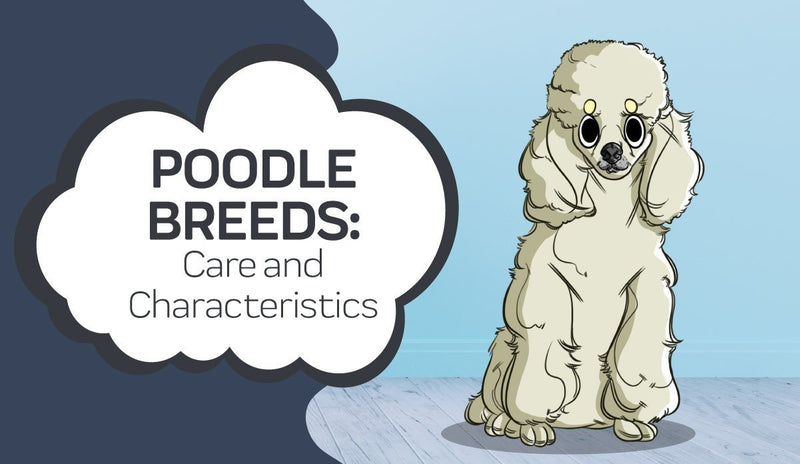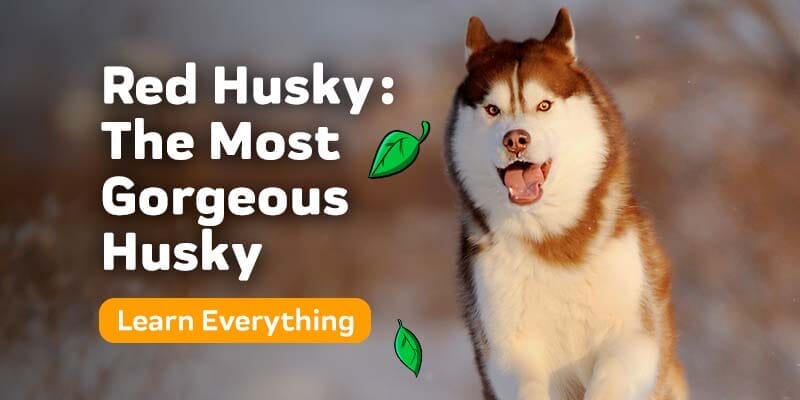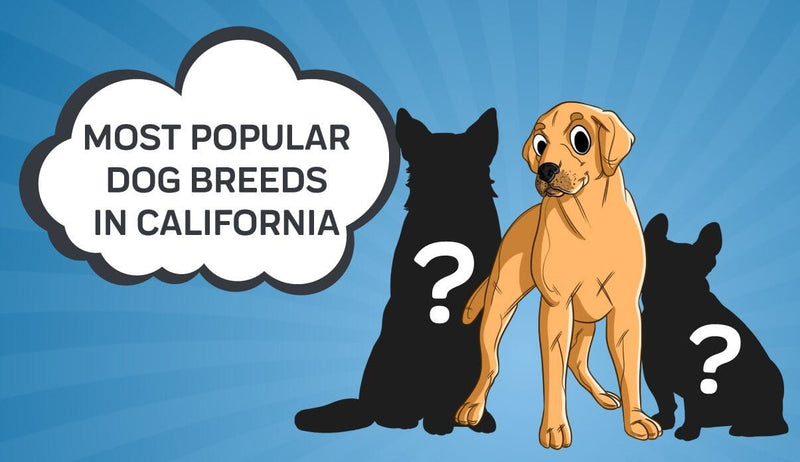
Sometimes dogs find us. Someone we know has puppies or we see a dog in need of rescue and we don't give much consideration to breed, we're already in love. Other times we have just decided we need a dog and we're planning our doggie addition carefully. Breed is important. It can impact the type of relationship we have with the dog, how to care for it, and health concerns we need to be watchful for. In this post, we'll help you determine whether you want a herding dog and which of the most common herding dog breeds is right for you.
Do You Want a Herding Dog : What is a Herding Dog?
Herding dogs are dog breeds with the instinctual desire to herd, or control, other animals. These breeds were developed over time as humans taught dogs how to use their natural instincts to direct livestock. This breeding has resulted in a vast group of dog breeds that are intelligent, friendly, active, agile, and very receptive to training. They are typically fun and agreeable animals.
Herding Dogs vs Working Dogs
It is easy to confuse herding dogs with working dogs. In fact, until the American Kennel Association created a separate name for them in 1983, even experts lumped the two into the working dog category. Yes, herding is a form of work, but it is a distinct kind of work giving different characteristics than ones working dogs get from having been bred for other types of labor. Think more of pulling sleds and serving as guard dogs.
Working dogs are intelligent and great for training like herding dogs are, but they are more protectors and built for endurance rather than agility.
While similar, there are unique benefits, unique concerns, and differences in character that make herding dogs or working dogs a better fit for different pet owners.
Is a Herding Dog Right for Me?
Herding dogs make fun pets. Their intelligence, friendliness, and high activity level are perfect for the pet owner who wants to spend a lot of quality time playing with their dog.
If you can't spend a lot of time with your herding dog, you shouldn't have one. They can easily become overweight or obese, may develop behavior problems, and will suffer depression if they can't be kept occupied and exercised. it isn't possible to provide the mental and physical stimulation a herding dog needs without your presence.
Some herding dogs have such a strong herding instinct that they will attempt to herd their family members. They may nip at you, your child, or other animals like they were bred to do with livestock. It isn't supposed to be dangerous, but it could be if they cut you or trip you. And it can be scary.
Some individual herding dogs may not be able to be around children, but most can, particularly those who were raised with children. Some may require special training to keep them from attempting to herd. This is a greater concern with some breeds than others.
Know the Most Common Herding Dog Breeds
Australian Cattle Dog
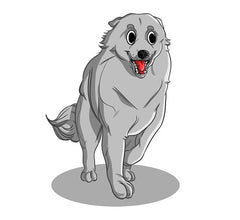
These dogs are born with white coats and develop as they grow either blue-gray or red-spotted coats with mottling and/or speckling. They are medium-sized dogs, standing between 17 and 20 inches tall and weighing between 35 and 50 pounds. Their life expectancy is 12 to 16 years. They have short, dirt-resistant coats that only shed a little, so they don't require a lot of grooming.
They are pleasant, loyal, and curious dogs. Wary of strangers and more on the protective side, they make good watchdogs. They need a lot of quality time with their owners and a lot of exercises. If you and/or your family want a nearly constant play companion who isn't interested in playing with everyone they meet, an Australian Cattle Dog may be for you.
Border Collie
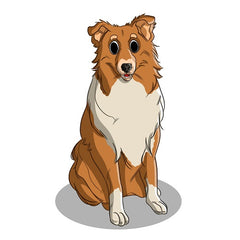
These dogs are most commonly depicted as black and white and a bit fluffy, but they can come in a variety of colors and patterns. They're always fluffy. Their most distinctive physical attribute is their intense almond-shaped eyes. They are medium-sized dogs that stand between 18 and 22 inches tall and weigh between 30 and 55 pounds. Their life expectancy is 12 to 15 years. With either soft or rough coats, they require moderate grooming and are moderate shedders.
They are adaptable, quick to understand and anticipate your requests, not overly affectionate, and have a high endurance level. These dogs are excellent for those who want more of a mental companion in a dog, who understands and minds exceptionally well without being physically demanding, but who also wants to engage in outdoor activities with their dog. They are less likely to get along well with children than some of the other popular herding dogs, but you shouldn't automatically rule them out on that basis either.
Bearded Collie
These dogs have a long, shaggy coat, the reason for the name Bearded Collie. They are medium-sized dogs, reaching as tall as 18 to 22 inches in height and weighing between 45 and 55 pounds. Their life expectancy is 12 to 14 years. Their long coat is not hard to care for, but it does require a daily brushing.
They are playful, intelligent, and charismatic dogs, better for easy-going, silly fun than training. They will usually be great with kids. Like other herding dogs, they need to be active, but they are not the most demanding in this area.
Collie
These dogs have coats in sable and white, tricolor, blue merle, and pure white. They're a larger dog, measuring 22 to 26 inches and weighing between 50 to 75 pounds. Their life expectancy is 12 to 14 years. They come in both soft and rough coats that require a little maintenance to keep from getting matted.
They are intelligent and sensitive dogs that are capable of anticipating their owner's needs. Lassie was a Collie, and the reputation fits. They are protective of and devoted to their families without being wary of strangers. These are beautiful, dignified dogs who make intelligent companions, and they require a slightly more than moderate amount of exercise.
German Shepherd
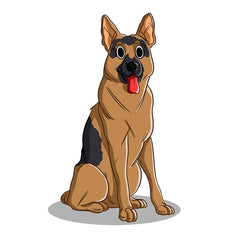
One of the most commonly preferred dog breeds, these dogs are black and tan with short coats. They're large, measuring between 22 and 26 inches and weighing from 50 to 90 pounds. The downside is that their life expectancy is only 7 to 10 years. Their coat is rougher on the outside and softer underneath, so they require less brushing but do shed heavily when they shed.
These dogs are loyal dogs that get along with people but are not overly friendly with strangers, so they make good watchdogs, while being great fun around the house, easy to train, and getting along well with kids. They need regular exercise but don't have unusual stimulation requirements.
Pembroke Welsh Corgi
These dogs are known for their adorable short and lengthy body, and their coats can be sable, fawn, black and tan, red, and with or without white. They measure 10 to 12 inches tall, may weigh as much as 30 pounds, and have a life expectancy of 12 to 13 years. They need daily brushing and may need baths during shedding periods.
They are very playful dogs, but are not unusually demanding about it, and get along great in families.
Shetland Sheepdog
These dogs have a long coat in black, sable, and blue merle, all with white markings. They are small dogs, measuring 13 to 16 inches tall, weighing 15 to 25 pounds and have a life expectancy of 12 to 14 years. Their long coat is actually not as demanding as you might expect, requiring weekly brushing and the need to check them for matting.
They are beautiful, playful dogs that are sensitive to their home environment and are quick to bark at strangers. The latter makes them a good watchdog. They are intelligent and eager to be trained, and while they are active, they are not as demanding as some other herding dogs.
Health Concerns with Herding Dog Breeds
When adopting a new dog of one of the herding dog breeds or any other breed there are likely to be unique health concerns.
More active dogs require more calories and protein to maintain weight along with the appropriate amount of exercise to ensure they don't become overweight.
An overweight herding dog is an unusually unhappy dog. If they can't be active, due to the excess weight itself or joint pain associated with the weight, it'll take a heavier toll on their mental health than your typical dog.
Different dog breeds may be prone to developing different diseases. To properly care for a dog, you may need to be watchful for signs of certain diseases or ensure they get regular screenings for a disease.
Collies can develop something called Collie eye anomaly that can lead to blindness. They will usually develop it before they are two years old. There is no cure for this condition.
Other herding dog breeds may be more prone to one or more of the following diseases:
- epilepsy
- hip dysplasia
- progressive retinal atrophy
- autoimmune diseases
- gastric dilatation-volvulus
- degenerative myelopathy
- exocrine pancreatic insufficiency
- cataracts
- cutaneous asthenia
- cystinuria
- intervertebral disk disease
Education, watchfulness, and preventative care and checkups may make all the difference in stopping scary, debilitating, and potentially life-threatening diseases before they negatively impact your dog.
How CBD Oil Might Help Your Herding Dog
If you already have a herding dog and are trying to understand more about how to care for them, you may find CBD oil to be a helpful tool.
Some herding dogs like Collies and Shetland Sheepdogs are particularly sensitive to their environments, meaning that if the home environment is full of tension, your dog could easily become stressed. CBD oil is a popular anti-anxiety treatment that may help your dog stress less, enjoy their life more, and avoid suffering from anxiety-related health conditions.
Should your herding dog develop a disease, CBD oil is an increasingly popular choice for and shows promise in treating:
- inflammation
- acute and chronic pain
- depression
- epileptic seizures
- cancer
Inflammation and pain treatments are particularly important for your herding dog so they can remain active longer.
If your dog has to undergo treatments for a disease or condition, CBD oil may lessen common side effects such as:
It is also particularly beneficial to your herding dog to not suffer these side effects as they may impair the dog's ability to do the things it needs to do to remain happy and healthy.
Using CBD Oil
There is a wealth of choices for CBD oil products, so your dog gets what works and what they like.
You can choose from:
- oil tinctures
- extract concentrates
- capsules
- treats
- topicals
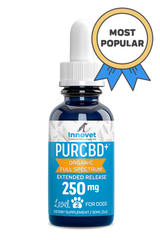
Extract concentrates are, as they sound, just cannabidiol, making this the purest and most cost-effective means of giving your dog CBD oil. It comes out in little beads that you dose by counting the number of beads. They may not like the flavor, so it may need to be masked in another strong-tasting food or beverage.
Tinctures mix cannabidiol with a carrier oil, and often a flavoring, to make taking CBD oil a more enjoyable experience. It comes with a dropper or sprayer so you can measure the dose by counting the drops or sprays. You can add it directly to the dog's mouth or to their food.
Capsules eliminate the taste issue for dogs who are good about taking pills.
Treats make giving your dog CBD oil super fun, and they come in both crunchy and chewy forms to suit your dog's taste.
Topicals like lotion allow you to apply CBD oil directly to a localized area, like the dog's legs. This is particularly helpful for dog's with arthritis or hip dysplasia.
Dosing CBD Oil
Concentrates and tinctures require you to determine the right dose for your dog's ailment and measure it out. This is good because it gives you control, but sometimes it isn't necessary.
Capsules and treats dose simply by giving them a certain number of capsules or treats. These are often sold for treating a certain ailment, like CBD oil treats for anxiety say on the package how many treats to give your dog of a certain size.
Unusually small, large, young, old, or sick dogs may have special dosing requirements.
There isn't a lot of hard data on what doses work for what ailment, so you often have to tweak the dose for your dog. Start with the lowest recommended dose and work up to what makes your dog feel better.
Risks Associated with CBD Oil
CBD oil is pretty safe, which is one reason it is growing so much in popularity. Humans like to use CBD oil for themselves and their pets as a natural treatment option to replace medications with scary side effects and risks, to lessen side effects of a medication so the medication can keep being taken, or to continue to treat an illness when medical professionals have deemed an illness incurable.
There is no evidence that you can overdose your dog on CBD oil. If you give them an excessive amount, they may experience sedation, loss of appetite, or diarrhea. You want to avoid those, of course. That's part of why it is recommended to start with a lower dose and work up to an effective dose.
CBD oil interacts with other medications because it changes how the liver absorbs medications. All this means is that the doses don't work as expected. You should discuss CBD oil use with your veterinarian if any other medications or treatments are involved.
CBD oil is not FDA approved at this time, because it hasn't undergone enough testing. It takes a lot of testing and a long time to get FDA approval. Results are not guaranteed, so it is not recommended to use CBD oil as the primary or only treatment for a life-threatening illness unless another treatment cannot be used.
Purchasing CBD Oil
Educate yourself before purchasing to get the safest product for your dog.
Full-spectrum versus CBD isolate
CBD isolate is just cannabidiol while full-spectrum CBD oil is made up of cannabidiol and other cannabinoids and nutrients from the hemp plant. A lot of customers often find themselves asking what the difference is between full spectrum and CBD isolate. Full-spectrum is actually the most popular option because people feel they'll get more benefits, but some people also swear that CBD isolate works better for them. Full-spectrum can be of particular benefit for dogs who are not eating well and need the extra nutrients.
Third-party testing
Some disreputable CBD oil manufacturers have sold products with poor quality cannabidiol or less cannabidiol than customers were promised. Sometimes it contained none at all. Reputable CBD oil manufacturers provide the results from third-party lab test results so you can ensure you are buying what you think you're buying for your dog. Look for the test results on the manufacturer's website and read them.
Source
Manufacturers should also tell you where the hemp was grown so you can know it came from a country with safe growing practices.
Extraction method
Look for mention of the CO2 extraction method as it is the safest and purest one.
Ingredients
Like just about everything else you buy, fewer ingredients are usually safer, because the company isn't using unnecessary ingredients and you can more easily research the names of what is in there.
We invite you to start your CBD oil journey with us here at Innovet because we meet or exceed all of these criteria.
Innovations from Innovet
We're always looking for new ways to treat pet ailments and to improve their lives, including treatments, toys, and supplies to keep your herding dog happy and healthy. If your dog has a need that is not addressed with current products from the rest of the pet market or our website, let us know so we can find a solution for your pet. It's our pleasure.
Sources
Herding dogHerding Dog Breeds
CBD Oil For Dogs: Everything You Need To Know
Cannabinoids in the management of difficult to treat pain
Cannabinoids in the Treatment of Epilepsy
Approved by:
Dr. Sara Ochoa
Doctor of Veterinary Medicine, St. Georges University

Thanks for stopping by!
P.S. We Love You!
Sincerely,
The Innovet Team
Please do not ask for emergency or specific medical questions about your pets in the comments. Innovet Pet Products is unable to provide you with specific medical advice or counseling. A detailed physical exam, patient history, and an established veterinarian are required to provide specific medical advice. If you are worried that your pet requires emergency attention or if you have specific medical questions related to your pet’s current or chronic health conditions, please contact or visit your local/preferred veterinarian, an animal-specific poison control hotline, or your local emergency veterinary care center.
Please share your experiences and stories, your opinions and feedback about this blog, or what you've learned that you'd like to share with others.













